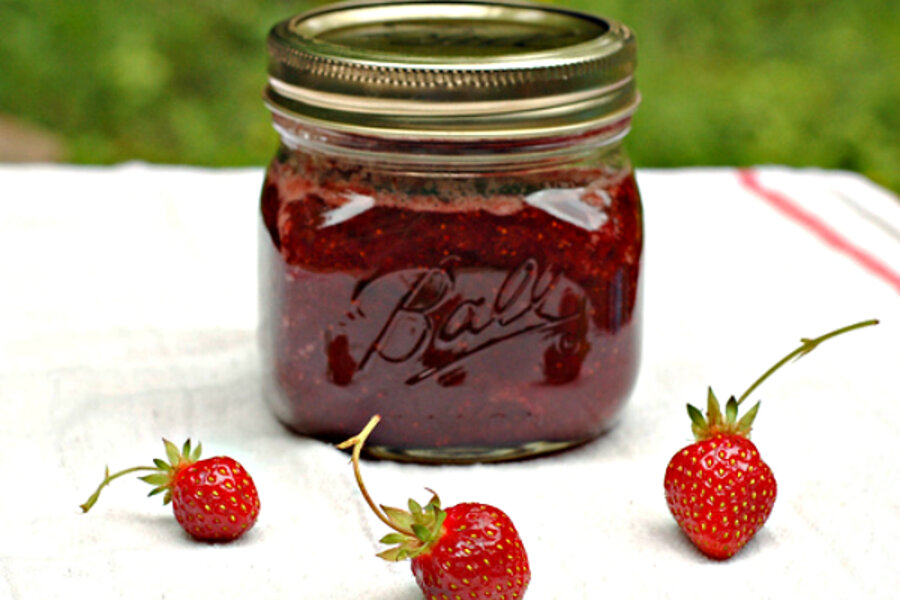By Eve Fox, The Garden of Eating
Makes 6 pint jars
16 cups cleaned, hulled, halved (or chopped, depending on the size) strawberries
6 cups granulated organic sugar
8 tablespoons powdered pectin
1/2 cup organic lemon juice (you can squeeze your own but for projects like this, I buy organic lemon juice in the little squeeze bottles, even the organic stuff is cheap (under $1.50 a bottle) and it saves some time)
1. Combine the strawberries and 2 cups of the sugar in a non-reactive pot. Let the mixture sit at room temperature until the sugar begins to pull the liquid out of the berries, about 15 to 30 minutes, then cover and refrigerate over night (this is called maceration.) If you don't have time to wait that long, let sit for an hour or more.
2. When you're ready to jam out, prepare a boiling water bath and 6 wide mouth pint jars, lids and bands (you can also use a combination of half-pint and pint jars if you prefer – we canned some of ours in the smaller jars as sometimes it's nice to have the option of a smaller jar) according to the directions outlined here.
3. Take the macerated berries out of the fridge and put them and the rest of the ingredients in a large non-reactive pot (you may want to use a larger pot than you think you'll need since the jam is going to boil and foam quite a bit and a bigger pot can help you prevent boiling over which gets VERY sticky when you're dealing with this amount of sugar).
4. Bring to a boil over high heat (this jam will foam like crazy) and cook on high heat, stirring regularly for 15 to 20 minutes, until it takes on a thick, syrupy consistency. If you have animmersion blender, use it at this point to puree some of the fruit to whatever consistency you desire. If not, you can use a blender to puree about a third of the jam.
5. Let the jam boil vigorously until it reaches 220 degrees F. (105 degrees C). If you don't have a candy thermometer, you can judge that it is done when the bubbles begin to look thick and syrupy. You can also see if it's sheeting – dip a spoon in the jam then hold it up and let it drip back into the pot – if the drips fall singly and seem liquidy, it needs to cook longer. But if the drips have begun to run together and form a sheet as they drip, you've achieved your set and can stop cooking.
6. Remove the pot from the heat and ladle the jam into your prepared jars. Wipe the rims with a clean, wet cloth, apply the lids and rings and process in a boiling water bath for 10 minutes. Remove from the boiling water bath with your jar lifter and set in a draft-free place on a towel to cool. Don't let the jars touch each other as they're cooling.
7. The jars should begin to make a most delightful pop or ping noise ans the seal forms, pulling the centers of the lids down and making them slightly concave. Once the jars have cooled for 24 hours, you can check the seals by removing the bands. Grasp the jar by the edge of the lid and lift gently an inch or two off the towel-covered countertop. The lid should hold fast. If it does not hold, refrigerate the jam and use it within two weeks. If it does, store in a cool, dry place for up to a year.







